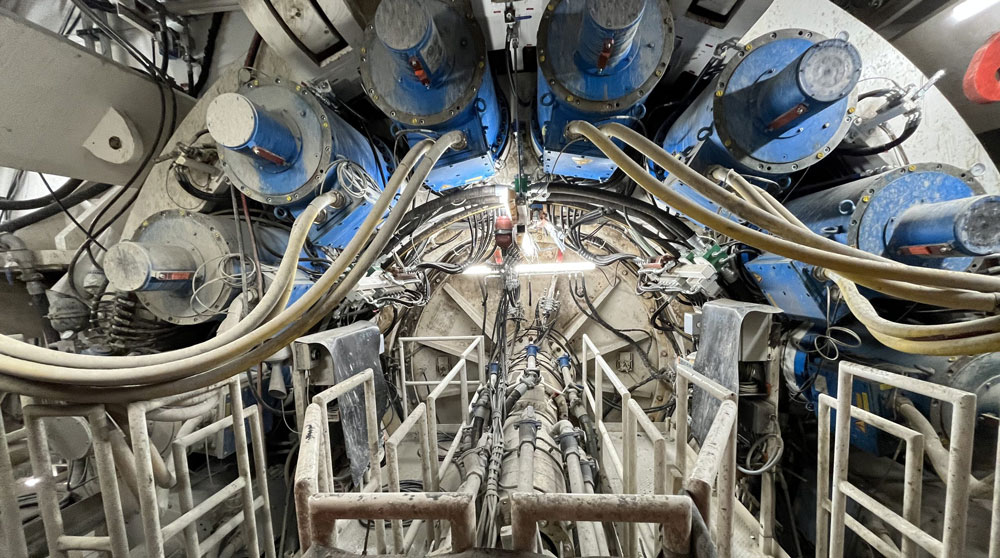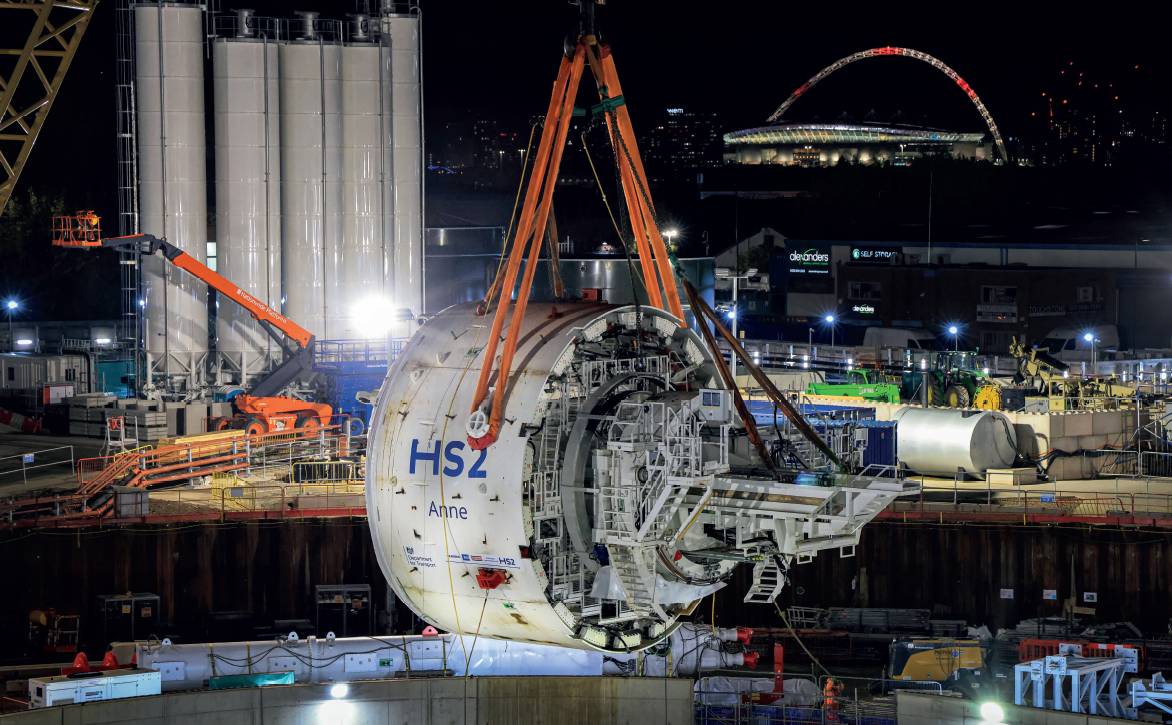Future of Tunnelling | Overview
Digging into risk
While techniques, practices and resources in tunnelling are continually improving, risk will never be eliminated and the ways to manage it must be updated and maintained alongside them. Rob Hakimian reports.
Tunnelling is one of the most complex and challenging engineering tasks, meaning that the risk is high and the management of risk on any project is imperative.
The fires which broke out at High Speed 2’s Chiltern Tunnel and Transport for London’s Silvertown Tunnel in 2022 go to show that even the best-prepared and best funded projects face risks. At the same time, extreme rainfall events have made tunnelling losses to water related issues – such as ingress and flooding – more common.
 A risk register can be used to identify risk on a tunnelling project and identify controls needed to reduce that risk
A risk register can be used to identify risk on a tunnelling project and identify controls needed to reduce that risk
The third edition of the Code of Practice for Risk Management of Tunnel Works was published in March. It acknowledges that the ways tunnels are designed and the environments into which they are being introduced have changed. The new code updates its risk management guidance to align it with the demands of modern global market.
Failures and oversights in tunnelling are not common and are getting rarer, according to independent tunnel consultant and co-chair of the third edition’s working group Bill Grose. Nevertheless, in his experience, accidents can still arise from a lack of technical expertise in risk assessments, incomplete decision making records or insufficient attention to high impact, low probability events such as collapses and floods.
The code of practice exists to ensure that these areas are not overlooked, and Grose says that the third edition is stronger on this front.
HISTORY OF THE CODE
The idea for a tunnelling code of practice followed a number of underconstruction tunnel failures in the UK, most notably the Heathrow Express tunnel collapse of October 1994. The frequency of insurance claims from tunnel projects had led to a loss of confidence from insurers.
As a result, the Association of British Insurers (ABI) warned the tunnelling industry that if there was no significant reduction in the number of claims on tunnelling projects then it’s members might no longer be willing to insure them.
The ABI had had success with a fire safety code of practice, whose publication had led to a reduction in fire insurance claims. It suggested something similar could be written for tunnelling. It then worked in collaboration with the British Tunnelling Society to produce the first edition of the Code of Practice for Risk Management of Tunnel Works in 2003.
“The industry welcomed it with open arms,” Grose says. “It enabled the industry to say ‘look, this is what we need to comply with’.”
An international version was published in 2006 before the official second edition arrived in 2012. Work on the third edition started in 2018 and has included input from more than 100 tunnelling, modelling and insurance stakeholders. This is the first edition to be co-published by the International Tunnelling & Underground Space Association and the International Association of Engineering Insurers.
KEY FACT
8Number of engineering and insurance specialists who worked on the latest edition of the Code of Practice for Risk Management of Tunnel Works
RISK MANAGEMENT OR MANAGEMENT OF RISK?
While the code of practice was always intended to help projects with risk management, the authors decided that it was crucial that the third edition clarify that the management of risk is not necessarily the same thing.
“People were confused in the past, or thought they were the same thing,” Grose says. “Consequently, they tended to focus on the risk management rather than the management of risk.”
Insurer Liberty Specialty Markets global head of civil construction and co-chair of the third edition working group Patrick Bravery succinctly sums up the difference.
“Risk management is the top down process; it’s having a written plan upon which you can have a structured approach to the identification and treatment of risk,” he says.
“Management of risk is actually on site, bottom-up implementation of controls.”
Controls on a tunnelling project can be anything physical that reduces the risk of damage to the works. Examples include flood protection around access shafts, fire protection blankets near hot works, redundancy built into propping systems, reducing the duration of work susceptible to natural perils, and protection of completed works to prevent damage or weathering during subsequent construction.
Bravery says that risk management and management of risk “need to work together with one flowing from the other”.
“For example, if you’ve got a brilliant process that has no impact at site level, then that’s clearly a failing,” he says. “Or if you have great controls on site but it’s not being overseen from above, then who’s to know if you’re controlling the right risks?”
“If you have great controls on site but it’s not being overseen from above, then who’s to know if you’re controlling the right risks?According to the code, a project’s risk controls should be managed using a risk register. This is a live document that lists all the risks on a project and details the controls that must be in place to manage them. It should be continually revised as required throughout the job.
“A typical risk register will start with the identification of the risk. Then it will identify controls that can be put in place to bring that inherent risk down to a residual risk, and then there’ll be scoring to surmise whether that risk is acceptable,” Bravery explains.
“That identifies concrete actions that need to be carried out to turn untreated risk into an acceptable residual risk – the risk that remains with those controls in place.”
Using the risk register, a project can set triggers for factors such as settlement, movement or convergence. If these data approach the triggers, the risk register guides the mitigation efforts that should be put in place to minimise the risk – for example, putting in additional props if a retaining wall moves by a certain amount.
“By having it all clearly laid out then you give assurance to management that the actual risk on a project site is at an acceptable residual level rather than the original inherent risk,” Bravery says.
HIGH IMPACT, LOW PROBABILITY
Grose believes people on site tend to focus on the risk factors that can change from day to day. This means they often undervalue risks that occur infrequently but which cause the most damage. This can mean that there is little planning for these events, leading to insufficient emergency provisions that result in more severe damage than there should be.
 HS2 Ltd says efficient risk management is critical to the High Speed 2 programme’s successful delivery
HS2 Ltd says efficient risk management is critical to the High Speed 2 programme’s successful delivery
“Mostly, there are thankfully no high impact low probability events because the hazard frequency is low,” Grose says. “But in rare but well-publicised cases, the event occurs with expensive, reputation-damaging and sometimes fatal consequences.”
He adds: “While insurance may well cover the majority of the financial consequences of ensuing damage, it will not prevent other consequences.
“It is absolutely in a project’s best interests not to underestimate high impact low probability risks.”
An update in the third edition of the code of practice relates to emergency response plans for when these low-probability, high-impact events occur.
The authors found that people too often banked on the events being low frequency and therefore did not consider their severity and what could be done if they happened. They have therefore ensured that the code calls for response plans for all high-consequence risks.
“Emergency response plans are now becoming more common in western countries and the evidence is that others are following suit,” says Grose.
“Also, the plans are becoming more comprehensive. The concept of an emergency response plan is to recognise that sometimes bad things do happen and there needs to be a plan in place for dealing with it, so that we can reduce the severity of the event,” Bravery says. “That’s an important holistic view rather than just focusing on the likelihood.”
MODELLING AND INSTRUMENTATION
Water-related problems have been relatively common for tunnelling projects and are more of a concern with climate change causing more frequent extreme weather events. However, modelling has helped projects to better foresee these issues.
“It used to be something that we had to ask about and we might get blank faces,” Bravery says.
“Now people are starting to have answers to it, and that is supported by better weather forecasting and flood modelling.”
The latest edition of the Code of Practice for Risk Management of Tunnel Works acknowledges the growing importance of building information modelling (BIM) and 3D modelling in tunnelling projects.
“It is absolutely in a project’s best interests not to underestimate high impact low probability risksIt also includes a suggestion that projects model the uncertainty of the ground, not just the certainty of the built environment.
Bravery says that projects’ geological cross sections and construction plans look neat and complete in diagrams, but the reality is rarely as straightforward when work starts on site.
“Trying to model that uncertainty based on the data you do have can be quite powerful and there are organisations now that offer that service,” Bravery says. “We think that’s going to be a huge step forward in years to come.”
Grose adds that big insurance losses resulting from tunnel collapses have resulted in a focus on instrumentation and monitoring.
“It’s clear that the better the instrumentation and monitoring, the more chance there is of stopping things going wrong,” he says.
To that end, the new edition of the code improves the definitions for instrumentation and monitoring and offers guidance on implementing a plan. “It was about making sure the definitions hang together and that the flow from the design stage through to implementation was clear,” says Bravery.
CULTURE
A new addition to the code of practice is the discussion of risk awareness in the work culture of a project.
“Culture comes from the top, so must be led by the senior management team on site, by example and by direction,” Grose says.
“They must ensure that their message flows through the organisation, so that the foremen, operatives and engineers in the field are clear about their responsibilities in respect of the measures being taken to manage risks.”
“There are projects where you go on site and you can feel that people live and breathe risk management, not because it’s a procedure but because it adds value,” Bravery says.
“That’s usually because the culture is right and that has to be set from the top.”